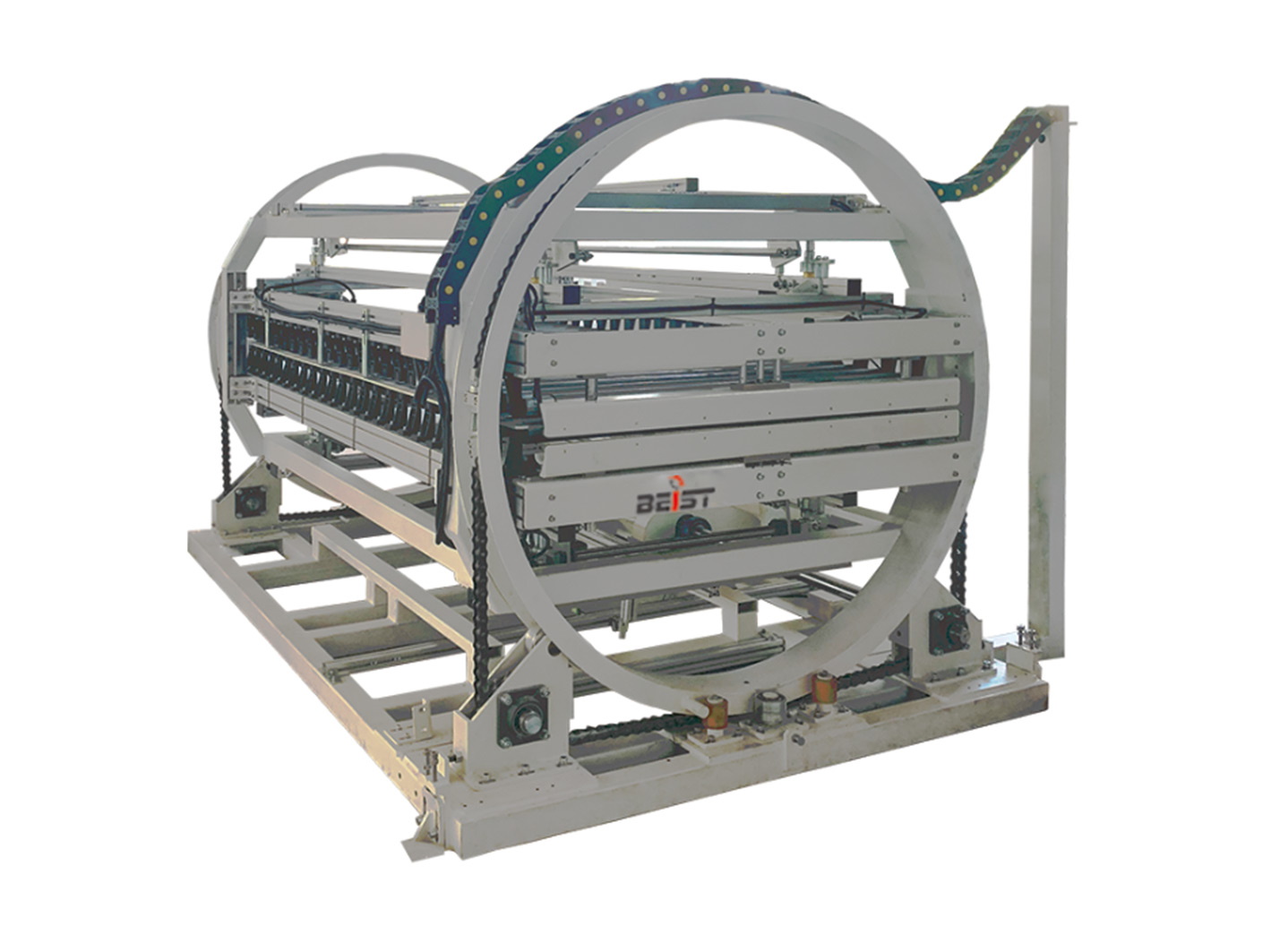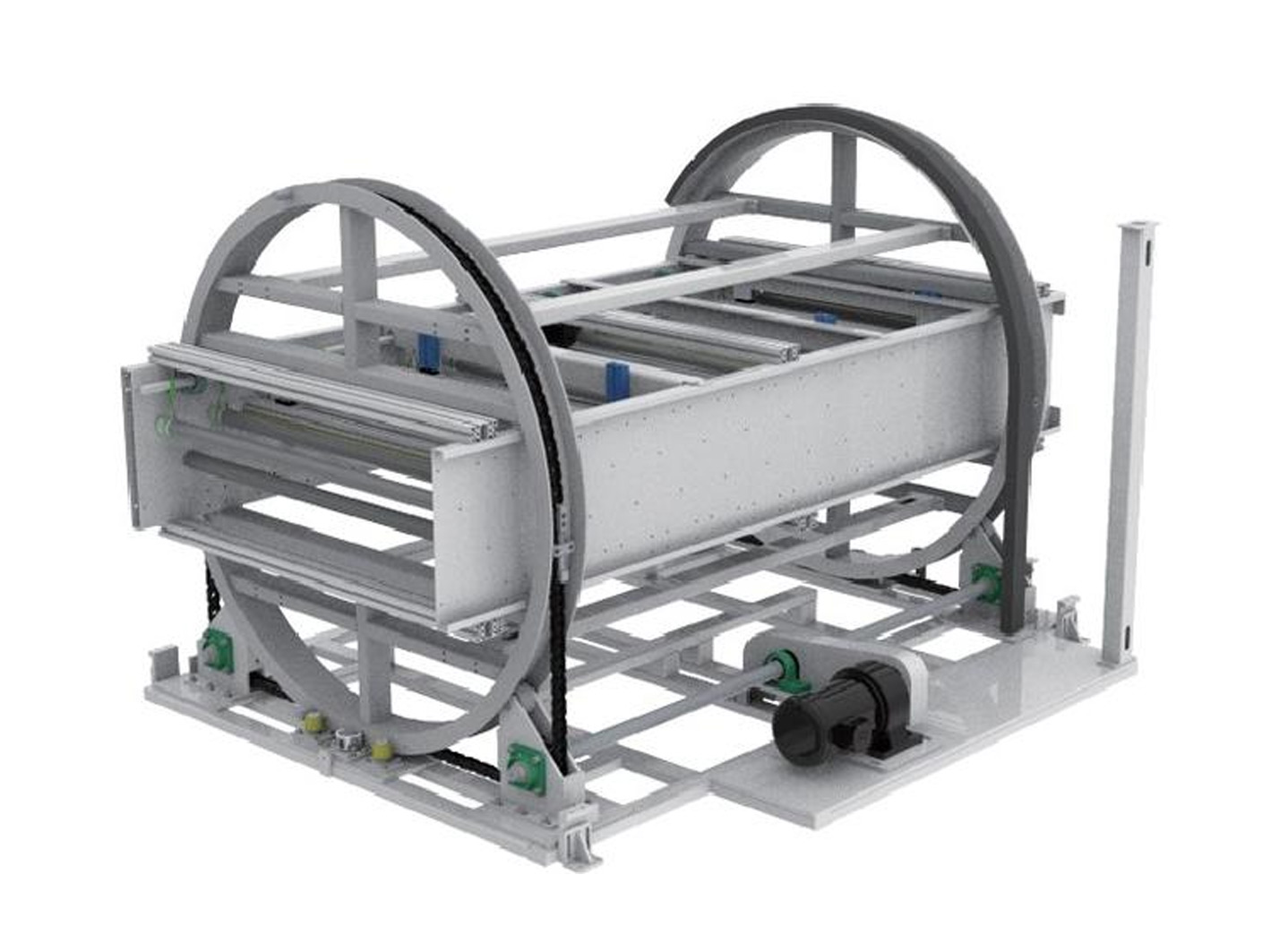

Automatic flip machine is also a kind of powered roller conveyors.
An automatic flip machine is a type of automated machinery designed to flip or reorient products during manufacturing processes, significantly enhancing efficiency and precision in various industries.
Automatic flip machine is used in matching works for the 180 degree automatic flipping of all kinds of panel workpieces, such as plane door boards, cupboard side panels, calcium silicate boards, magnesium oxide boards and fiber cement panels etc.
The notable rise of automatic flip machines can be attributed to their ability to streamline production lines, reduce labor costs, and improve product quality, thereby addressing the increasing demands for rapid and flexible manufacturing solutions in a competitive market.
The importance of automatic flip machines is underscored by their diverse applications, ranging from panel flipping in construction to component handling in electronics manufacturing.
Features
|
Item |
Materials (Remarks) |
|
Application |
Conveyance and turning of single sheets |
|
Drum speed |
0-25m,35m,52m/min adjustable |
|
Rotating speed |
4 times /min |
|
power |
3.3kw |
|
load |
60kg/set |
|
frame |
Shot blasting welding of square tube |
|
disc |
Roll bending welding of steel plate |
|
Main bean |
100*50mm aluminum profile |
|
roller |
φ50*1.5mm Hot-dip galvanized pipe sleeve 2mm adhesive |
|
inner spindle |
φ15mm Drawing treatment |
|
Drum center distance |
Design according to workpiece length, conventional 80mm,110mm |
|
elastic strap |
BEIST customized |
|
transmission shaft |
φ30mmChrome plated optical shaft |
Application
Packaging Industry
In the packaging industry, automatic flip machines play a crucial role in ensuring that products are correctly oriented for packaging. By automating the flipping process, manufacturers can improve packaging speed and accuracy, allowing for higher throughput and reduced operational costs.
Industrial Automation
Automatic flip machines are increasingly integrated into various sectors of industrial automation, enhancing efficiency and productivity on the manufacturing floor. These machines are designed to automate the flipping or turning of products during production processes, which is particularly useful in industries that require precise alignment or orientation of components. For instance, in the automotive sector, automatic flip machines can facilitate the assembly of parts by ensuring that components are correctly positioned for subsequent manufacturing steps, thus streamlining the production line and reducing manual labor requirements
Quality Control
Automatic flip machines are also employed in quality control processes across different manufacturing sectors. By ensuring that products are flipped and inspected correctly, these machines help reduce the risk of defects and ensure that products meet quality standards. For example, in electronics manufacturing, automatic flipping can assist in inspecting circuit boards and other components for proper assembly and functionality. The integration of real-time data analytics in these machines allows manufacturers to identify and address bottlenecks or quality issues swiftly, thus enhancing overall production efficiency and product reliability.
Advantages
Automatic flip machines offer numerous benefits that enhance efficiency and productivity in various industrial and commercial applications. These machines are designed to automate the flipping process of products, thereby reducing manual labor and optimizing workflow.
Increased Efficiency
One of the primary advantages of automatic flip machines is their ability to significantly increase operational efficiency. By automating the flipping process, these machines can perform tasks at speeds and accuracies that exceed human capabilities, leading to higher production rates and reduced lead times.
This efficiency allows companies to meet customer demands more effectively, ensuring timely delivery of products while maintaining quality standards.
Cost Savings
Implementing automatic flip machines can result in substantial cost savings for businesses. The automation of routine tasks reduces the need for extensive manual labor, thereby lowering labor costs.
Additionally, these machines often come with predictive maintenance features, minimizing downtime and costly repairs associated with equipment failure.
Overall, the reduction in operational costs contributes to improved profit margins for manufacturers.
If you are interested in our products, please feel free to let me know.